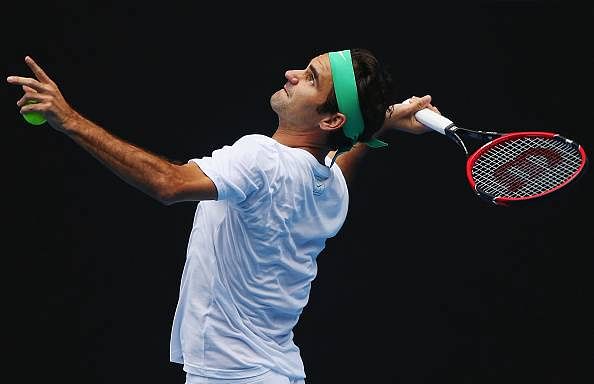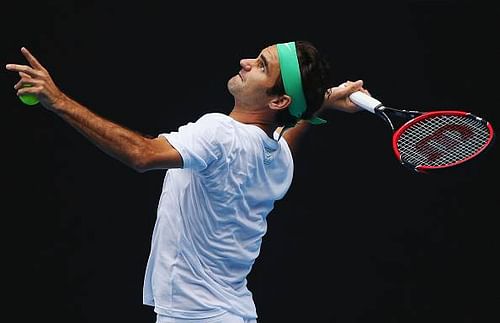
Why Roger Federer can win the Australian Open 2016
Novak Djokovic has been in the form of his life – and that form has been consistent for three years and running, now, with the Serb at fifth on the all-time list of longest-reigning World No. 1s.
He’s also the reigning champion at the Australian Open and looks on track to take his sixth title at the venue. Federer, meanwhile, has not won a Grand Slam since 2012, when he won the title at Wimbledon. He has also not had the ideal start to the year, having reached the finals of the Brisbane International, a precursor to the Australian Open, losing the title to 14th ranked Canadian Milos Raonic, whom he defeated at last year’s finals.
In another coincidence, Raonic was then being coached by Croat baseline specialist Ivan Ljubicic – who has now taken over the mantle of coaching Federer after the Swiss parted ways with Stefan Edberg in late 2015.
With 11 finals finishes, 6 titles and two Grand Slam finals finishes, he may not have been the Federer of old, the Federer who routinely won Grand Slams – but that is an undeniably strong record for any tennis player.
He finished the year-ending ATP World Tour Finals in the final, losing eventually to longtime nemesis Novak Djokovic; that loss evened out the pair’s head-to-head record at 22 games apiece.
However, Federer has made a number of key changes since – changes that could stand him in good stead going into 2016.
2016 is an Olympic year – and Federer has said he has increased his already rigorous practice to go for gold. Although he does have top prize at the Olympics, it is at the doubles – Federer and current World No. 4 Stan Wawrinka.
Federer won silver at the London Olympics in 2012; he’ll now be gunning for top prize at each tournament.
With all of his opponents much younger than him, and Federer no spring chicken, he still has shown no signs of being in any way less energetic than any of his opponents.He’s also no stranger to the hard courts of Melbourne – winning there a staggering four times
Turn and face the Change
He made some big changes in 2014 too – bringing on Stefan Edberg and discovering, with long-term coach and confidant Severin Luthi a weapon that has flummoxed his opponents repeatedly, one that Federer, considered now into his dotage, has seen opponents across the board attempt to emulate, with little to no success.
Novak Djokovic began as a thorn in Federer’s side and slowly but surely ensured a stranglehold over Grand Slams (and most other tournaments) for the near future.
But Federer, that genius exponent of the serve-and-volley, the jack and master of all trades, has always managed to pull a rabbit out of a hat when he needs it most. This time, this rabbit could be in the form of his new coach Ivan Ljubicic, who is largely credited with protege Raonic’s rapid ascent up the ATP rankings.
Unlike Edberg, Ljubicic, only two years older than Federer, will likely be closer to the Swiss Maestro’s fitness levels – and that in itself could be a key factor in understanding and improving issues in his existing game.
In addition, Edberg tapped into, and honed, skill sets Federer was already adept at. His biggest rival at the moment – Novak Djokovic – is known for his aggressive baseline play and defense, something Federer has never particularly focused on despite being adept at it. It’s a tactic many of the newer generation use – among them Borna Coric, whose play is very reminiscent of the Serb, a fact the World No. 1 has acknowledged himself.
Federer is by no means a baseline weakling – he’s beat specialist Lleyton Hewitt on multiple occasions (although early on in the Australian’s career, it was he who dominated the Swiss), but his opponents have been significantly better – among them close friend and rival Rafael Nadal, who in his prime hit some of tennis’ most stunning winners from the baseline, especially on his pet surface, clay.
The Swiss’ strength has always lain in mixing up his game. He may be older than the rest – but his ability to constantly change, to moult, to bring newer aspects into a game that is already beyond multi-faceted, is something few tennis players have been able to do.
Introducing a refreshed, new aspect to his game with the touch of a brand new coach could bring out yet another facet of the Swiss and transform his style of play. Another tactic, perhaps, to surprise his opponents with, to ambush them. A Sneak Attack by Roger, just of a different kind.
At this year’s Australian Open, Federer and Djokovic are in the same half, negating entirely the chance of a finals clash between the pair – which means audiences could, and, barring any serious upsets, likely will, see a semi-final match between the two greats.
Federer and Djokovic are now tied with each other at 22 games apiece, and although it is Djokovic who is younger, in better form and more consistent, and doubtless one of the greats of the game himself, there are few in the history of the game who have been able to continuously transform, adapt, fluidly move as his opponents and surfaces change as much as Federer has, chameleon-esque in a David Bowie way.
He is an all-court player, an all-shot player, all-encompassing of the game any way you cut it.
Energized this year by the prospect of the Olympics and practicing with another legendary partner – Swiss Miss Martina Hingis, and still holding his own considerably against what can only be described as the brute force of an unstoppable Djoker, the fluid, dynamic nature of both Roger Federer and his game could see him add to his tally of 17 Grand Slams.
He dons the hats of tennis expert, gentleman and father all with consummate ease - and just as versatile in his game, Federer still has more than enough power and strength to go even further.
